Craft dowels, essential in various DIY and artistic endeavors, are crafted from multiple wood types, each selected for its distinct properties and suitability for specific applications.
Hardwoods like oak, maple, birch, and walnut are chosen for their durability, strength, and aesthetic appeal, contributing to projects ranging from furniture to decorative crafts.
Softwoods such as pine and cedar offer lightweight versatility, while bamboo provides an eco-friendly alternative with rapid renewability.
Crafters may also opt for mixed hardwoods for a balanced blend of characteristics. Understanding the wood varieties used in crafting dowels ensures optimal choices based on project requirements and desired outcomes.
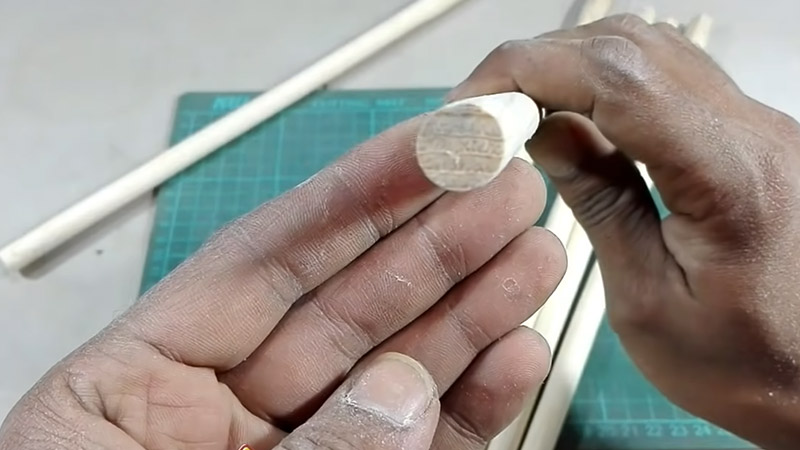
What Is Wooden Dowels?
Wooden dowels are cylindrical rods typically crafted from hardwood or softwood, serving versatile purposes in woodworking and construction.
These cylindrical pieces are commonly used for structural reinforcement, providing stability and support in furniture assembly, cabinetry, and various DIY projects.
Wooden dowels are available in various diameters and lengths and facilitate secure joinery, acting as connectors or pegs.
Their smooth surface and ease of customization make them valuable in creating solid and durable connections, while their natural material contributes to an aesthetically pleasing finish.
Wooden dowels are essential for artisans, carpenters, and DIY enthusiasts seeking reliable and functional solutions for their projects.
What Wood Are Craft Dowels Made Of?
Craft dowels are commonly made from various types of wood, each with its characteristics and suitability for different projects.
The choice of wood for craft dowels depends on factors such as the desired strength, appearance, and ease of working with the material.
Here is what wood dowels are made from:
Hardwood
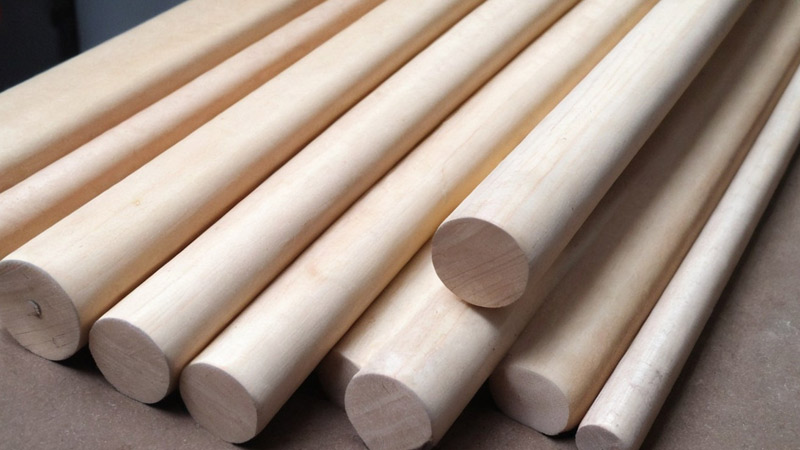
- Oak: Oak is a dense and robust hardwood, making it an excellent choice for craft dowels that require durability and stability. Its prominent grain patterns add a touch of natural beauty to finished projects. Oak dowels are often favored for furniture-making and other heavy-duty applications.
- Maple: Known for its pale and even color, maple is a hardwood that is relatively easy to shape and finish.
It’s preferred for crafters who want a clean, smooth surface for painting or staining. Maple dowels are commonly used in toy making, cabinetry, and decorative crafts. - Birch: Birch dowels are valued for their straight grain, delicate texture, and light color. Crafters appreciate birch for its uniformity and workability. It is commonly used in craft projects, including model-building, dowel painting, and DIY home decor.
- Walnut: Walnut is a dark hardwood with a rich, elegant appearance. Walnut dowels add a touch of sophistication to projects, and their distinct grain patterns make each piece unique.
Crafters often choose walnut for high-end furniture, musical instrument construction, and other premium applications.
Softwood
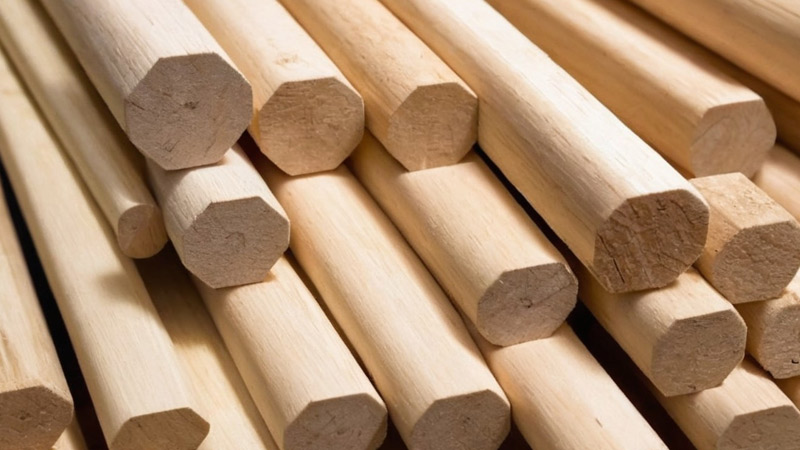
- Pine: Softwood dowels, such as those made from pine, are lightweight and easy to work with. Pine dowels suit various craft projects, including picture frames, birdhouses, and DIY home improvements. While not as hard as some hardwoods, pine’s affordability and versatility make it popular.
- Cedar: Cedar dowels are chosen for their natural resistance to decay, insects, and moisture. Crafters often use cedar dowels for outdoor projects, such as garden stakes, trellises, and plant supports.
The aromatic qualities of cedar also make it a preferred choice for crafting items like storage boxes and closet accessories.
Bamboo

Bamboo dowels are crafted from a renewable resource known for its strength and flexibility. Bamboo is eco-friendly, as it proliferates and can be harvested sustainably.
Crafters use bamboo dowels for projects like garden structures, lightweight furniture, and eco-conscious crafts.
Poplar
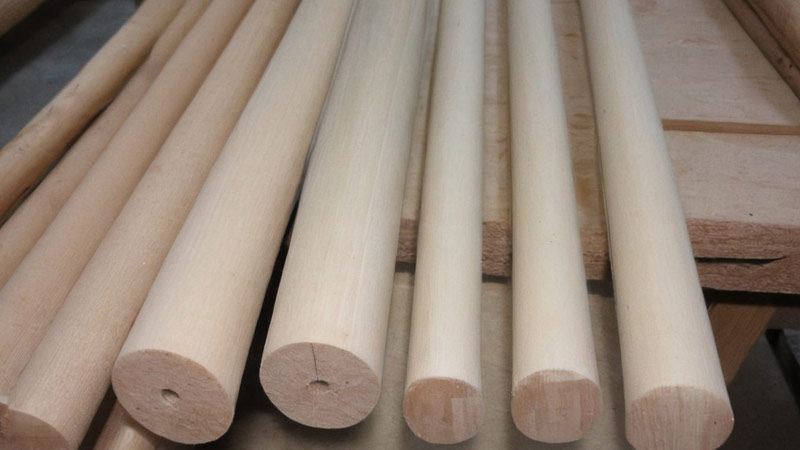
Poplar is a versatile hardwood that is relatively soft and easy to work with. It has a straight grain and accepts finishes well, making it suitable for projects with a smooth surface.
Poplar dowels are often used in crafting applications such as trim work, dowel art, and woodworking projects that involve painting or staining.
Mixed Hardwoods
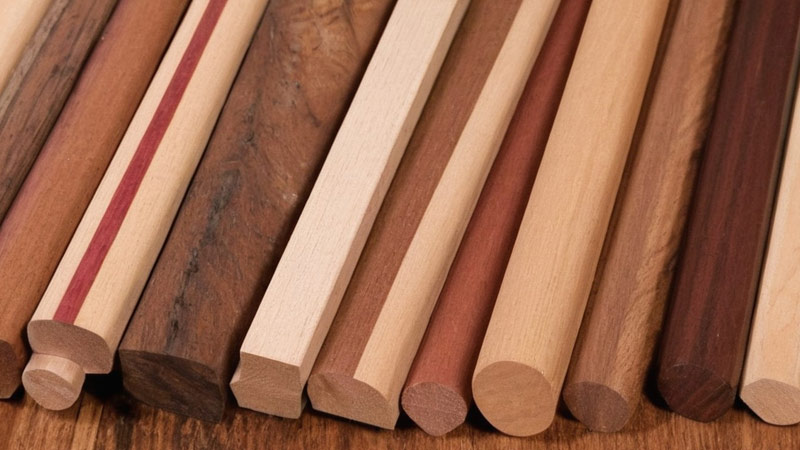
Some dowels are made from a combination of hardwood species. This approach allows crafters to benefit from the diverse qualities of different woods, achieving a balance of strength, aesthetics, and workability.
Mixed hardwood dowels are versatile and can be used in various craft projects where a blend of characteristics is desirable.
Best Wood for Dowels
Selecting the best wood for dowels is crucial to ensuring the success and longevity of a woodworking or craft project.
The choice of wood depends on factors such as strength, workability, appearance, and the intended use of the dowels.
Here are some of the best woods commonly used for crafting dowels:
Hard Maple
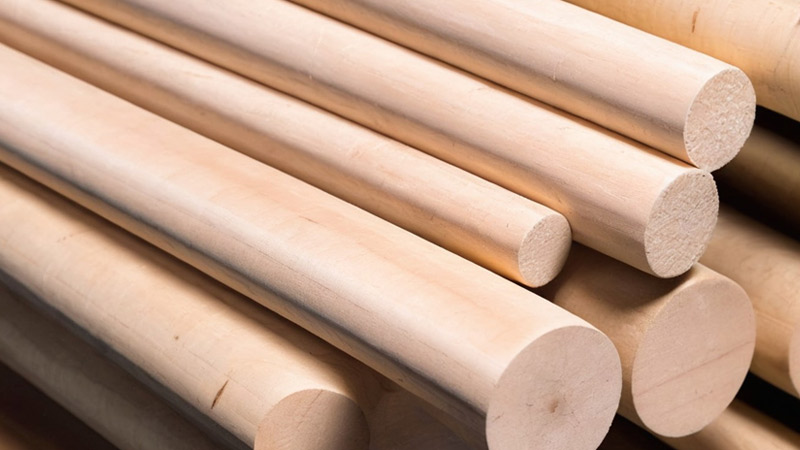
Hard maple, scientifically known as Acer saccharum, is a premium hardwood celebrated for its exceptional hardness and fine, uniform texture.
Its robust characteristics make it an ideal choice for crafting dowels that demand strength and durability.
Hard maple’s light-colored, smooth finish lends itself well to applications where aesthetics matter, such as in furniture making, cabinetry, and various architectural projects.
The wood’s ability to take finishes and stains gracefully further enhances its versatility, making it a staple in woodworking for functional and visually appealing components.
White Oak
White oak (Quercus alba) is a dense and durable hardwood with a distinctive grain pattern that adds character to finished products.
Its remarkable resistance to decay and moisture makes it particularly suitable for outdoor applications.
White oak dowels are frequently employed in projects ranging from garden structures to porch railings and boat building.
With strength and longevity, white oak embodies a timeless choice for woodworkers seeking reliability in diverse environments.
Hickory
Hickory, belonging to the Carya genus, is renowned for its impressive strength and shock resistance. The coarse texture and attractive grain of hickory make it a desirable material for applications requiring both durability and flexibility.
Hickory dowels find their place in various fields, including tool handles, sports equipment, and ladder rungs, where the wood’s innate toughness plays a crucial role in ensuring longevity and performance.
Walnut
Walnut, scientifically known as Juglans, is a dark hardwood celebrated for its rich color and elegant grain patterns.
While not the hardest hardwood, walnut dowels are favored for their aesthetic appeal, making them preferred in high-end furniture, musical instruments, and decorative crafts.
The unique combination of visual allure and workability positions walnuts as a go-to material for those seeking sophistication in their woodworking projects.
Bamboo
Bamboo, a rapidly renewable resource, boasts impressive strength and flexibility. Bamboo dowels, being eco-friendly, are perfect for various craft projects, including lightweight furniture, garden structures, and eco-conscious designs.
The natural characteristics of bamboo, such as its sustainability and unique appearance, make it an excellent choice for those seeking both functionality and environmental responsibility in their creations.
Cherry
Cherry (Prunus avium) is a hardwood that ages gracefully, developing a warm, reddish-brown patina. Dowels made from cherry wood are prized for their smooth finish and workability.
This makes them highly sought after in fine furniture, cabinetry, and other applications where a rich, classic appearance is desired.
Cherry’s ability to deepen in color over the years adds a touch of timeless elegance to any project it graces.
Ash
Ash, belonging to the Fraxinus genus, is a strong and relatively lightweight hardwood with a straight grain. Its ease of workability and compatibility with stains and finishes make ash dowels popular.
Commonly used in tool handles, sports equipment, and traditional woodworking, ash’s strength and versatility contribute to its widespread adoption in various applications.
Poplar
Poplar (Populus) is a versatile hardwood with a fine, straight grain. Its relative softness and ease of workability make poplar dowels suitable for craft projects that involve painting or staining.
Poplar’s adaptability makes it a favored choice among artisans and hobbyists, used commonly in trim work, dowel art, and various woodworking applications.
Mahogany
Mahogany, known for its deep, reddish-brown color and fine, straight grain, is a hardwood that exudes beauty and durability.
Mahogany dowels find a home in high-end furniture, musical instruments, and decorative items where a luxurious appearance is desired.
Its natural luster and ability to take on a high polish contribute to its status as a symbol of sophistication in woodworking.
FAQs
What Are Dowels Made Of?
Dowels are made of various woods, including oak, maple, birch, walnut, pine, cedar, and bamboo.
What Are Dowel Rods Made Of?
Dowel rods are crafted from hardwoods like oak, maple, and walnut, and softwoods like pine and cedar.
What Is the Strongest Wood for Dowels?
Oak is often considered the most robust wood for dowels, followed by walnut.
What Is the Best Wood for Dowel Rods?
The best wood for dowel rods depends on the project. Hardwoods like oak, maple, and walnut are famous for durability and aesthetics.
To Recap
Craft dowels are crafted from diverse woods, each chosen for its unique characteristics and suitability to specific applications.
Hard maple provides strength and a smooth finish, white oak excels in outdoor durability, while hickory boasts strength and shock resistance.
Walnut offers aesthetic appeal, bamboo introduces eco-friendly versatility, and cherry adds timeless elegance.
Ash and poplar cater to different woodworking needs, combining strength with workability. Mahogany, with its rich color and fine grain, signifies luxury.
The diversity in wood choices allows craftsmen to select materials tailored to their projects’ functional, aesthetic, and environmental requirements, ensuring a broad spectrum of possibilities in craft dowels.
Leave a Reply